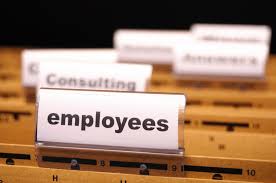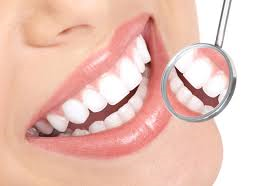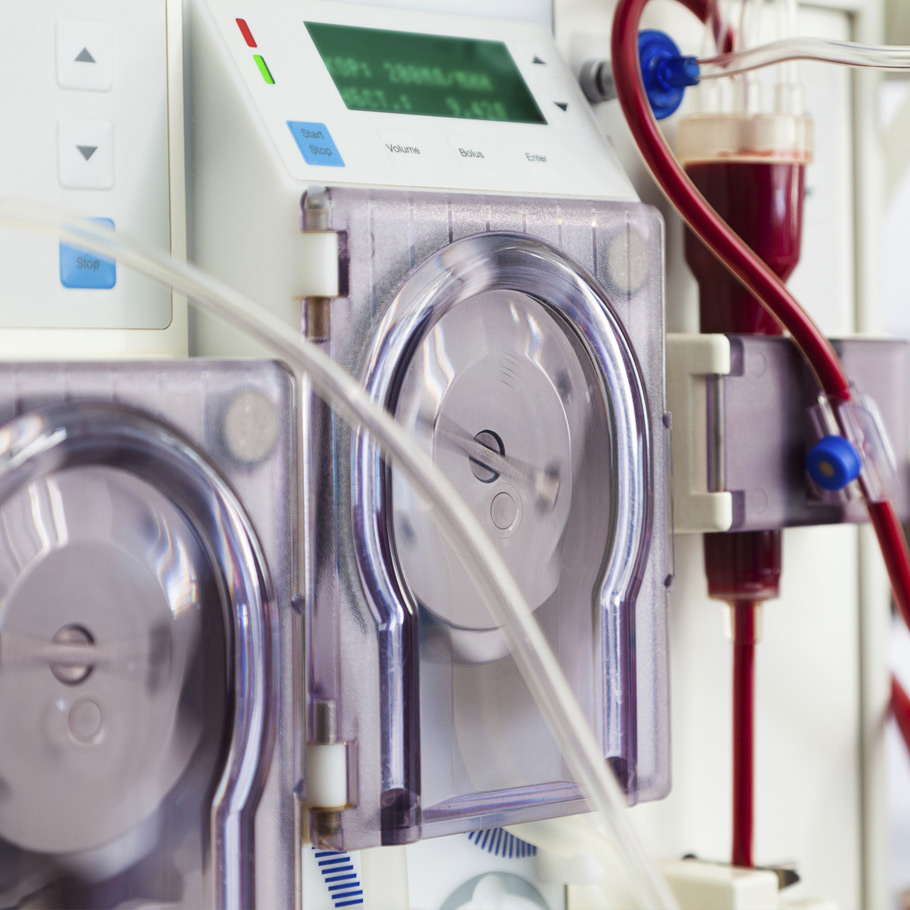Title Page
-
Conducted on
-
Prepared by
-
Location
-
-
-
-
Specify clinic:
-
The three major resources for standards and recommended practices for SPD are The Association for the Advancement of Medical Instrumentation (AAMI), The Association of periOperative Registered Nurses (AORN) and the Guidelines for Disinfection and Sterilization in Healthcare Facilities, 2008 by William Rutala, Ph.D, M.P.H., David Weber, M.D., M.P.H and the Healthcare Infection Control Practices Advisory Committee (HICPAC).
-
AAMI's Comprehensive guide to steam sterilization and sterility assurance in health care facilities (ANSI/AAMI ST79:2006 and ANSI/AAMI/A1:2008/A2:2009) is a complete guideline for all steam sterilization activities. AAMI has combined five recommended practices into this one standard. No matter what the size of the facility or the size of the sterilizer, this is a "must-have" resource that every SPD, Operating Room (OR) and IP should have readily available.
The five recommended practices incorporated into ST79 are:
•ANSI/AAMI ST46, Steam sterilization and sterility assurance in health care facilities
•ANSI/AAMI ST42, Steam sterilization and sterility assurance using table-top sterilizers in office-based, ambulatory-care medical, surgical, and dental facilities
•ANSI/AAMI ST37, Flash sterilization: Steam sterilization of patient care items for immediate use
•ANSI/AAMI ST35, Safe handling and biological decontamination of medical devices in health care facilities and in non-clinical settings
•ANSI/AAMI ST33, Guidelines for the selection and use of reusable rigid sterilization container systems for ethylene oxide sterilization and steam sterilization in health care facilities.
Point of Use (ANSI/AAMI 6.2-6.3)
-
Gross contaminant is removed with water
-
Instruments are sorted: Sharps removed
-
Instruments are sorted: Instruments placed back in original container.
-
Instruments are sorted: un-used instruments placed in bottom of basket.
-
Instruments are sorted: Towel placed on top of unused instruments
-
Instruments are sorted: Used instruments placed on top of towel.
-
Enzymatic pre-cleaner applied to used instruments.
-
Water moistened towel placed over instruments.
-
No other non-compliances observed.
Soiled Transport (ANSI/AAMI 6.4)
-
Soiled items are contained.
-
Soiled items are transported covered.
-
Transportation devices is labeled e.g. Soiled/Biohazard.
-
No other non-compliances observed.
Decontamination
Environment
-
Temperature is 16 - 18 deg C (60-73F) (ANSI/AAMI 3.3.6.5)
-
Humidity - Not to exceed 60%. (ANSI/AAMI 3.3.6.6)
-
Air Exchanges - 10 per hour. (ANSI/AAMI 3.3.6.4)
-
Negative air pressure. (ANSI/AAMI 3.3.6.4)
-
Area is clean. (ANSI/AAMI 3.4)
-
Surfaces/cabinets are nonporous. (ANSI/AAMI 3.3.7.1)
-
Lighting is sufficient. (ANSI/AAMI 3.3.6.7)
-
Temperature & humidity is checked and documented daily. (ANSI/AAMI 3.3.6.5-3.3.6.6)
-
Staff know how procedure for documenting and reporting out of range readings.
-
Soiled and clean areas are separated physically or procedurally. (ANSI/AAMI 3.3.7.1)
-
Handwashing sink is separate from decontamination sink. (ANSI/AAMI 3.3.6.8)
-
Handwashing sink has hands free operation. (ANSI/AAMI 3.3.6.8)
-
Handwashing sink is located next to exit door. (ANSI/AAMI 3.3.6.8)
-
Area is secure from general traffic and labeled appropriately. (ANSI/AAMI 3.4)
Chemistries
-
Water level is sufficient to submerge 1 tray. (ANSI/AAMI 7.5.6)
-
Solutions are diluted appropriately. (ANSI/AAMI 7.3)
-
Sinks are marked.
-
Appropriate solutions are utilized - Manual - Enzymatic for pre-cleaning. (ANSI/AAMI 7.5.3.2)
-
Appropriate solutions are utilized - Manual - Detergent for wash. (ANSI/AAMI 7.5.3.2)
-
Appropriate solutions are utilized - Manual - Low foaming/sudsing. (ANSI/AAMI 7.5.3.2)
-
Appropriate solutions are utilized - Manual - Treated water for final rinse. (ANSI/AAMI 7.5.3.2)
-
No other non-compliances observed.
Process Flow
-
Items are pre-cleaned. (ANSI/AAMI 7.3)
-
Appropriate items are submerged and cleaned under water to prevent aerosolization. (ANSI/AAMI 7.6.3.2)
-
Appropriate brushes are available and in good condition. (ANSI/AAMI 7.5.6)
-
Reusable brushes are cleaned on a routine basis - staff can articulate how & when. (ANSI/AAMI 7.5.6)
-
Disposable brushes are not reused. (N.2.2.7)
-
Lumens are brushed and irrigated. (ANSI/AAMI 7.5.3.2)
-
Lumened instruments are cleaned according to MIFUs (may include borescope and/or ultrasonic methods).
-
Instruments are disassembled per manufacturer's recommendations. (ANSI/AAMI 7.2.2)
-
Containers are cleaned per manufacturer's recommendations. (ANSI/AAMI 7.5.9)
-
Manufacturer's cleaning instructions are available for all items. (ANSI/AAMI 7.5.6)
-
TOSI (Test Object Surgical Instrument) is a test used to demonstrate the effectiveness of the washing/ultrasonic cleaning process in addition to quality controls performed on temperatures and/or detergents. It uses a synthetic soil developed to mimic the properties of blood and other proteinaceous contaminants but is sterile and will not contaminate instruments being processed.
-
Verification of ultrasonic cleaning process is performed (TOSI). (ANSI/AAMI 7.5.5)
-
Verification of washer cleaning process is performed (TOSI)(ANSI/AAMI 7.5.5)
-
Verifications of cleaning processes are logged/documented.
Safety
-
Approved eyewash station is available and in working condition. (ANSI/AAMI 3.3.8)
-
If eyewash station is attached to a sink hot water is disabled
-
Eyewash station is tested weekly and documented
-
Eyewash station is located in decontamination or within 10 seconds of chemicals
-
Staff know what MSDS is and where to find them. (ANSI/AAMI 4.2.2)
-
All chemicals have an MSDS on file
-
Staff know facility procedures for: Handwashing (ANSI/AAMI 4.2.2)
-
Staff know facility procedures for: Bloodborne Pathogens Exposure (ANSI/AAMI 4.2.2)
-
Staff are wearing appropriate PPE: Waterproof gown with sleeves.
-
Staff are wearing appropriate PPE: Decontamination gloves (not procedural) (ANSI/AAMI 4.5.2)
-
Staff are wearing appropriate PPE: Disposable cap (ANSI/AAMI 4.5.2)
-
Staff are wearing appropriate PPE: Faceshield/goggles (ANSI/AAMI 4.5.2)
-
Staff are wearing appropriate PPE: Mask (ANSI/AAMI 4.5.2)
-
Staff are wearing appropriate PPE: Shoe covers (ANSI/AAMI 4.5.2)
-
No other non-compliances observed.
Assembly - Prep & Pack
Environment
-
Temperature - 20 - 23 deg C ( 68 - 73 deg F) (ANSI/AAMI 3.3.6.5)
-
Humidity - 30% - 60% (ANSI/AAMI 3.3.6.6)
-
Air Exchanges - 4 per hour (ANSI/AAMI 3.3.6.4)
-
Positive Air Pressure (ANSI/AAMI 3.3.6.4)
-
Area is clean (ANSI/AAMI 3.4)
-
Surfaces are non-porous and easy to clean (ANSI/AAMI 3.3.7.2)
-
Lighting is sufficient (ANSI/AAMI 3.3.6.7)
-
Temp & Humidity is checked and documented daily -3.3.6.6(ANSI/AAMI 3.3.6.5-3.3.6.6)
-
Staff know procedure for documenting and reporting out of range readings.
-
Work Area
-
Is clean and organized. (ANSI/AAMI 3.4)
-
Contains appropriate supplies to reduce time away from assembly area: (ANSI/AAMI 3.3.7.2)
- Indicators/integrators
- Tray liners
- Tip protectors
- Packaging Supplies (e.g. locks/arrows, data cards, filters)
- Sharpness Testing Material
- Insufficient materials at hand
-
Lighted magnification is available.
Set Assembly
-
There is a computer tracking system in place and is used appropriately
-
Set sheets are accurate, organized and easy to read
-
Containers/Baskets are labeled to match set sheets
-
All instruments are inspected for: Sharpness (ANSI/AAMI 8.4.3)
-
All instruments are inspected for: Functionality (ANSI/AAMI 8.4.3)
-
All instruments are inspected for: Insulation integrity (ANSI/AAMI 8.4.3)
-
All instruments are inspected for: Cleanliness (especially lumens, bone instruments)(ANSI/AAMI 8.4.3)
-
All instruments are inspected for: Dryness (ANSI/AAMI 8.4.3)
-
Instruments are disassembled/assembled per manufacturer's recommendations (MIFUs) (ANSI/AAMI 8.4.1)
-
Lumens are flushed with sterile or distilled water (ANSI/AAMI 8.3.8)
-
Peel pouches are not placed in instrument sets (ANSI/AAMI 8.3.4)
-
Indicator/Integrator is placed in challenging location and all levels of multi-level trays (ANSI/AAMI 10.5.2.2.2)
Packaging
-
Containers/baskets are inspected for: (ANSI/AAMI 8.4.3)
- Functionality
- Cleanliness
- Sharp Edges
- Not inspected
-
Sets are wrapped appropriately. (ANSI/AAMI 8.3.1)
-
Filters and locks are placed appropriately. (ANSI/AAMI 8.3.3)
-
Sets are labeled appropriately - wrapped items are labeled on tape. (ANSI/AAMI 8.3.2)
Peel Pouches (ANSI/AAMI 8.3.4)
-
Are appropriate size.
-
Are sealed appropriately
-
Double peel pouches are appropriate size not folded
-
Peel pouches are placed plastic to plastic and paper to paper
-
Peel pouches are correct modality.
-
Are labeled appropriately with accurate descriptions
-
Are labeled on the plastic side not the paper side.
Manufacturers' Instructions for Use (MIFU)
-
Wrap/Container/Peel Pouch IFUs available (ANSI/AAMI 8.2)
-
Peel Pouch validation for double peel pouching available (ANSI/AAMI 8.3.4)
Safety
-
Sets adhere to AAMI recommended weight limit of 25lbs. (ANSI/AAMI 8.4.2)
-
Work Stations are at appropriate heights (ANSI/AAMI 3.3.7.1)
-
Staff assembling manual cleaned instruments are wearing gloves
-
Staff inspect sets for sharps prior to reaching into the baskets (ANSI/AAMI 7.4.1)
-
Proper body mechanics are used when lifting sets and pushing carts (ANSI/AAMI 6.5.4)
-
No other non-compliances observed.
Sterilization
Equipment Maintenance (ANSI/AAMI 9.4)
-
Sterilizers are clean and in working order
-
Sterilizers are cleaned on a routine basis per manufacturer's recommendations (MIFU)
-
Preventative maintenance is performed per manufacturer's recommendations
-
Preventative maintenance is documented and available for review
-
Daily maintenance is performed per manufacturer's recommendations (MIFU):
- Steam traps are removed and checked/cleaned daily
- STERRAD plate is removed and replaced/cleaned daily
- STERIS System 1 is wiped down daily with alcohol
- No daily maintenance per MIFU.
-
Printers are in working order for accurate cycle verification.
Loading Sterilizer (ANSI/AAMI 8.5.1)
-
Items w/similar sterilization parameters are placed in the same load
-
Sets are positioned to facilitate air removal, steam penetration and drying
-
Containers are placed beneath wrapped items and peel pouches (ANSI/AAMI 8.5.6)
-
Peel Pouches are placed plastic to plastic and paper to paper (ANSI/AAMI 8.5.2)
-
Peel Pouches are positioned on their side not flat
-
If liners are used they are approved for use - manufacturer's IFUs on file (ANSI/AAMI 8.5.1)
-
Difficult to dry sets are not placed over the drain
-
Sets are placed flat not on their sides (ANSI/AAMI 8.5.3)
-
Packages are checked for: (ANSI/AAMI 8.3.1)
- Wrap integrity
- Appropriate tape application
- Containers have filters/arrows
- Non-compliant observation - specify
-
Load stickers/labels "Lot Control Identifier" are applied containing: (ANSI/AAMI 10.3.1)
- Sterilizer Number or Code
- Date
- Cycle Number
- Expiration Date - If Event Related - "Contents sterile unles package is opened or damaged. Please check before using"
- Non-compliance observed - specify
Sterilizer Records (ANSI/AAMI 10.3.2)
-
Each load documentation includes:
- Load or lot number
- Specific contents including quantity, department, and specific description.
- Minimum exposure time and temperature or print out is attached
- Name/initials of Operator
- Results of BI or Bowie Dick if applicable
- Response of CI or PCD if applicable
- Non-compliance observed - specify
Cycle Selection (ANSI/AAMI 8.6.1)
-
Appropriate cycles are posted near sterilization equipment
-
All items have manufacturer's recommendations on file
Cycle Verification
-
Physical Parameters are verified at end of cycle and tape is initialed/signed (ANSI/AAMI 10.3.2)
-
CI, BI, PCD are opened, read, and documented prior to release of load (ANSI/AAMI 10.6.1)
Load Removal (ANSI/AAMI 8.8)
-
Load is placed in a low traffic area
-
Load is placed in an area away from vents, doors, windows, drafts
-
Load is not touched until items are cool
-
Loads are not released prior to cooling - if removed they are opened for flash
-
Documentation procedure is in place for early release of implants
Immediate Use Sterilization
-
Devices sterilized for immediate use should have the same level of cleaning and preparation as instruments being terminally sterilized. The most current AORN recommendations state: "Immediate-use sterilization" should be performed only if all of the following conditions are met:
-
The device manufacturer's written instructions on cycle type, exposure times, temperature setting, and drying times (if recommended) are available and followed.
-
Items are disassembled and thoroughly cleaned with detergent and water to remove soil, blood, body fats, and other substances.
-
Lumens are brushed and flushed under water with a cleaning solution and rinsed thoroughly.
-
Items are placed in a closed sterilization container or tray, validated for flash sterilization, in a manner that allows steam to contact all instrument surfaces.
-
Measures are taken to prevent contamination during transfer to the sterile field.
-
No other non-compliance observed.
Sterile Storage
Environment
-
Temperature - 24 - 29 deg C ( 75 - 85 deg F) (ANSI/AAMI 8.9.2)
-
Humidity - Not to exceed 70%
-
Air Exchanges - min 4 per hour
-
Positive Air Pressure
-
Area is clean (ANSI/AAMI 3.4)
-
Surfaces are non-porous (ANSI/AAMI 3.3.7.2)
-
Temp & Humidity is checked and documented daily (ANSI/AAMI 3.3.6.5-3.3.6.6)
-
Staff know procedure for documenting and reporting out of range reading
Shelving / Bins
-
8" - 10" from floor (ANSI/AAMI 8.9.2)
-
18" below ceiling or sprinkler heads
-
2" from outside walls
-
If open shelving bottom shelf has barrier or solid shelf
-
Shelves and bins are free of dust
-
Shelves / bins are labeled with locations, set and peel pouch names
-
Shelves are organized to facilitate quick location of sets
-
There is an index for set location
Sets
-
Sets are placed to protect the integrity of packaging (ANSI/AAMI 8.9.2)
-
Stacked sets do not compromise sterility (ANSI/AAMI 8.9.2)
-
Items are rotated 1st in 1st out (ANSI/AAMI 8.9.3)
-
Items are rotated based on packaging IFUs validated Shelf Life (ANSI/AAMI 8.9.3)
-
If dust covered:
- Dust cover is appropriate size
- Dust cover is approved for use - manufacturer's recommendations on file
- Dust cover is applied appropriately- immediately after cool down
- Non-compliance observed - specify
Sterile Delivery (ANSI/AAMI 8.10.1)
-
Items are cool prior to delivery
-
Package integrity is maintained during transport
-
Delivery Cart is clean and functional (ANSI/AAMI 8.10.2)
-
Sterile items are covered for transport
Safety
-
Appropriate eye protection is available when handling chemicals (ANSI/AAMI 4.5.2)
-
Appropriate Gloves are worn when handling chemicals
-
Proper body mechanics are used when lifting sets and pushing carts (ANSI/AAMI 8.4.2)
-
Mittens are worn for burn protection (ANSI/AAMI 8.8.1-8.8.2)
-
Alarms for EtO are in place and in working order
-
Staff are monitored on a routine basis for EtO exposure
Sterilizer Testing
-
DART Warm-up performed prior to testing per manufacturer's instructions
Bowie Dick / DART
-
Performed daily on sterilizers programmed with prevacuum cycle (ANSI/AAMI 10.7.6.1)
-
Bowie Dick/Dart is placed horizontal on bottom shelf over drain (ANSI/AAMI 10.7.6.3)
-
Procedure in place for failed tests (ANSI/AAMI 10.7.6.5)
-
Staff know procedure for failed tests
-
3 tests are performed after installation, major repairs, re-location (ANSI/AAMI 10.8.1)
-
Leak Test performed weekly per manufacturer's instructions
Biological Indicator - Process Challenge Device - PCD
-
Testing is performed minimally weekly preferably daily (ANSI/AAMI 10.5.3.2)
-
Each type of cycle is tested - per manufacturer's instructions (ANSI/AAMI 10.5.3.2)
-
PCD is placed horizontal on bottom shelf over drain (ANSI/AAMI 10.7.2.2)
-
A PCD is used for each wrapped load (ANSI/AAMI 10.5.4)
-
BI is incubated in a timely manner (ANSI/AAMI 10.7.2.3)
-
A control is incubated daily (ANSI/AAMI 10.7.2.3)
-
Results are read and documented daily in a timely manner. (ANSI/AAMI 10.7.2.3)
-
Procedure in place for failed tests. (ANSI/AAMI 10.7.5)
-
Staff know procedure for failed tests.
-
3 tests are performed after installation, major repairs, re-location. (ANSI/AAMI 10.8)
-
Incubators are maintained per manufacturer's recommendations
Recall Policy and Procedure
-
Recall procedure in place for positive tests and wet loads (ANSI/AAMI 10.11.2)
-
Staff know recall policy and procedure
-
Policy and Procedure is based on AAMI Guidelines and facility IC and Risk Management requirements"
-
No other non-compliances observed.
Staffing Considerations
-
Responsibility for performing sterilization processes should only be assigned to personnel that are competent in all aspects of disinfection and sterilization procedures as well as safety precautions. Staff should have documented competencies in:
-
All phases of decontamination: sorting, disassembly/reassembly, manual and mechanical cleaning methods, microbicidal processes, equipment operation, standard/transmission-based precautions, and engineering and work-practice controls
-
The operation of all sterilizing systems.
-
The principles of sterilization and infectious disease transmission; infection control, and all aspects of sterilization.
-
Staff safety related to medical device processing and sterilization.
-
Any other opportunities for improvement.
General
Loaner Trays
-
Sterile processing is notified of loaners prior to receiving them.
-
Instruments are received in facility at least two working days (48 hours) for existing loaner sets and three working days (72 hours) for new sets before scheduled case.
-
Inventory list is provided/available.
-
FDA-cleared manufacturer written instructions (IFU) are available for cleaning, packaging and sterilization processes.
-
Inventory and quality check is completed.
-
Multiple trays are numbered and labeled (with patient and surgeon).
-
Trays do not exceed 25 pounds.
-
All instruments are in good condition, with no rusting or pitting.
-
Container is in good condition, with no rusting, tape, residue, etc.
-
Inventory performed prior to returning instrumentation.
Start of the SPD Day Cleaning
-
Unnecessary equipment/supplies are removed.
-
Damp dust from the top to bottom: Sterilizers, All reachable flat surfaces (furniture, work tables, shelving, countertops, sinks.
SPD Terminal Cleaning
-
All floors wet vacuum or single-use mop.
-
Work tables
-
Countertops
-
Sinks
-
Pass-through window
-
Computer accessories
-
Light switches
-
Door handles and push plates
-
Telephones and mobile communication devices
-
Computer accessories
-
Chairs and stools
-
Trash and linen receptacles
-
Housekeeping is performed on a routine scheduled basis (ANSI/AAMI 3.4)
-
Traffic control limits entry to SPD (ANSI/AAMI 3.2.4)
-
Staff can describe what IFUs/MIFUs are and where they can find the.
-
Attire is hospital approved - jewelry is kept to a minimum - no false nails etc. (ANSI/AAMI 4.4-4.5.1)
-
Personal objects are not stored in SPD
-
Disposable/Single Use Devices are not reprocessed (ANSI/AAMI 5.3)
-
Quality checkpoints are in place, documented, assessed and reported (ANSI/AAMI 11.2.1)
-
Non-conformities are reported by the customer, documented, assessed and reported
-
Policy and Procedures are up to date and are based on Regulatory Guidelines
-
Policy and Procedures are adhered to
-
Staff know and understand Policy and Procedures
-
Documentation is complete (ANSI/AAMI 10.3.2)
-
Audits are performed on Documentation to ensure logs are complete and accurate (ANSI/AAMI 11.2.1)
-
Competencies are in place and performed on a routine basis (ANSI/AAMI 4.3.1)
-
There is a routine training and in-service plan in place and adhered to (ANSI/AAMI 4.3.1)
-
Reports of processing outcomes are sent to Infection Prevention and Control Periodically (i.e., IUSS utilization; wet packs, other PI).
-
No other non-compliances observed















